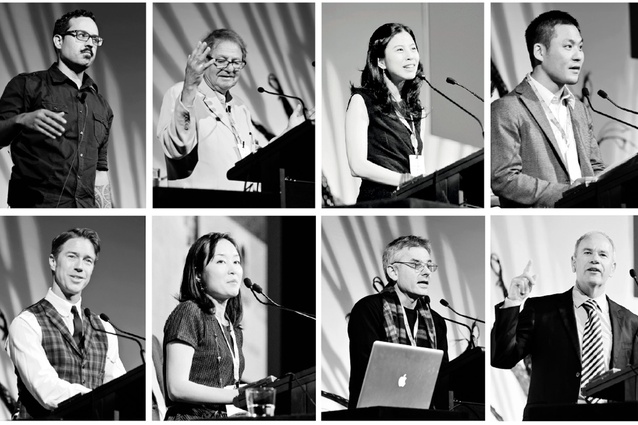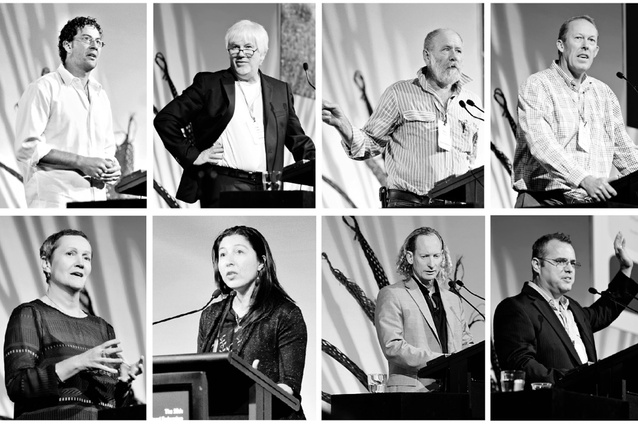Shared memories
The IFLA50 World Congress is now just a memory – but one that has left a legacy of positive engagement, knowledge sharing and profession celebration. Renée Davies reflects on some key moments.
Despite having more knowledge at our disposal than at any other period in history, we are still grappling with how to live on and share our world. In many instances we are still at a crisis point.
Landscape architect Catherine Howett has been quoted in Landscape Architecture Magazine as highlighting environmental protection as one of the most important issues facing the profession.
“Landscape architects should be in the vanguard of the environmental movement, discovering ways to help design environments that at the most fundamental level ‘do no harm’ – and beyond that, in ways large and small, contribute to the renewal of the earth and of the human spirit.”
This sentiment of innovative environmental responsibility set alongside localised sense of place was echoed by a number speakers and delegate discussions at the recent International Federation of Landscape Architects (IFLA) 50th World Congress. The theme of the Congress – Shared Wisdom in an Age of Change aimed at throwing out a challenge to explore these issues and discuss opportunities to influence and manage change in our landscapes and safeguard and enhance where appropriate qualities we value.
Landscape architects are well placed to address such issues and provide leadership and guidance with these challenges and opportunities. As we practice, we need to be alert to the need for new knowledge, to changes in technology, climate and social conditions. Like no other profession, we rely on knowledge from varied disciplines, this shared wisdom can be better utilised to ensure our work is not only technical or artistic but that it is respectful of a range of communities and cultures. This point was highlighted by Dr Rana Singh who suggested an approach that honours the spiritual connection we have with the environment and the art of, “Acting locally but insightfully.”
At the World Congress, this idea of looking beyond and drawing wisdom from outside the circle of landscape architecture was embodied by Vincent Ward. Ward started the proceedings by exploring local experiences and memories and their importance to landscape, the secret of which, he believed, was to create, “pockets of enrichment that will provide for experience… to find the specific that will resonate”.
Ward’s thoughts were discussed by a group during the break where it was agreed by Ian Henderson that landscapes should exhibit an “intensification of moments”, an idea supported by Will Thresher’s suggestion of a “heightening of the sense of difference”. These impromptu discussions were a special feature of the Congress, where ideas put forward by the speakers were further explored through varied discussion with a truly international perspective (40 different countries were represented by the Congress attendees).
As highlighted by Sim van der Ryn and Stuart Cowan in the book Ecological Design ,“We live in two interpenetrating worlds.”
“The first is the living world, which has been forged in an evolutionary crucible over a period of four billion years. The second is the world of roads and cities, farms and artefacts, that people have been designing for themselves over the last few millennia. The condition that threatens both worlds – unsustainability – results from a lack of integration between them”.
A number of speakers explored the notion of sustainability and environmental/ecological design – and a point of difference was that the speakers recognised the importance of linking people to place within these concepts.
Thomas Woltz illustrated through a series of rural projects how narrative can be used in design as a way to tell stories to link people to place and how design was an important vehicle for making values of conservation visible.
In his view, the virtues of distinguishing between these interpenetrating worlds provide an opportunity to support stewardship.
“It is ok to show artifice – to tell the story of the reconstruction – artificiality tells the story of redemption and becomes an insurance policy for longevity,” he said. Woltz’s statement that, “Beauty is the portal between us as designers to create a society of stewards” is an honest and unashamed belief in aesthetics, and its role in what we do as designers, that we should celebrate that contribution and use it.
Michael Pawlyn presented further concepts of sustainable design and shared the knowledge of biomimicry as an inspiration for design. He championed a curiosity about what is coming next in order to respond as designers with creativity and appropriateness. He outlined three interlinked challenges: to increase resource efficiency; to look at the whole metabolism of cities and go from lineal structures to closed loops; and move from fossil fuel economy to solar economy. He urged us, as designers, to play a different role, to fearlessly create futures, and believes that, “Inspired collaboration will get through the challenges of the future… we can choose to shape the future instead of fear the future.”
Jim Sinatra’s irreverent and vibrant approach to exploring sense of place and the local in design culminated in the statement that, “The future of our profession is creating peace.” This concept seemed to resonate with a number of delegates and was further emphasised by Jacky Bowring, whose powerful discussion on memory and landscape highlighted human and spiritual connection as a critical component of our landscapes.
“Remembering is critical to identity and who we are – the key to resilience is connection to place,” said Bowring.
A culmination of all the above concepts (and more), that were explored, discussed and debated throughout the Congress was presented in a collective declaration. This declaration supports the International Landscape Convention being championed by IFLA and aims at articulating to a broad audience the potential of landscape as a tool for sustainable development; that supports and empowers local communities and deals with the idea of landscape as a whole space (rural, urban, wilderness, man-made, treasured and degraded) in order to give it strength.
Most importantly, it highlights the relationship that people have with landscape in a holistic and integrated view that sits above the compartmentalised nature of landscape so often presented. A sentiment that became very apparent during the presentations and ensuing discussions during the Congress.
Our discipline grapples on a daily basis with concepts of change and dynamism. To appropriately respond to this, we need to ensure constant exploration of new knowledge and sharing of wisdom. Sharing and exploration that adds value to the understanding and knowledge of our discipline and in so doing, constantly improves our professional competence and potential to change the world.
We need to be united, and address these issues, because as a profession we have much to offer, and the world has never needed our services more.
To end as I began, with a quote, here’s something from Maya Angelou.
“The desire to reach for the stars is ambitious. The desire to reach hearts is wise.”











